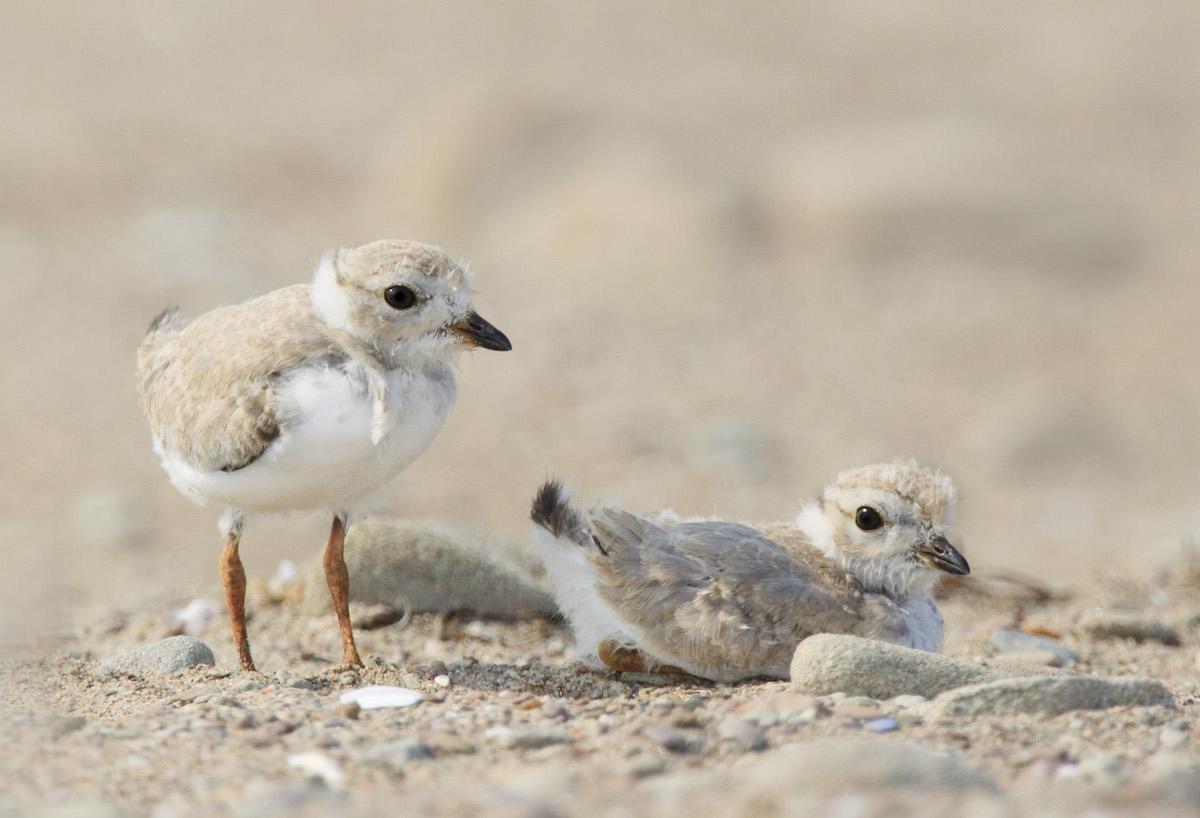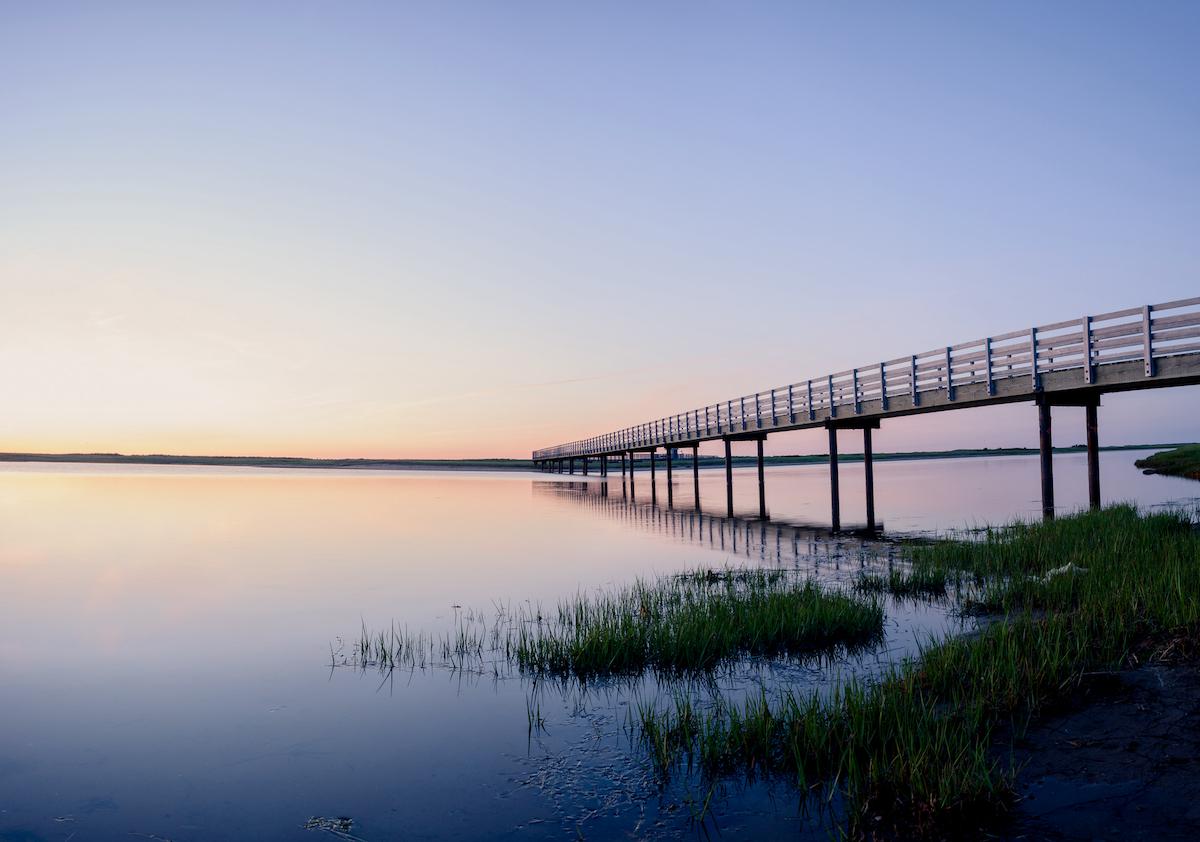
Two young Piping Plovers on the sandy beach at Kouchibouguac National Park/John Chardine
Whether you’ve realized it or not, when you visit one of Canada’s national parks or national historic sites, there’s likely a management plan guiding all the Parks Canada decisions on how to protect, present and operate the site. Every decade or so, management plans come up for review and the public can weigh in.
Kouchibouguac National Park in New Brunswick initially saw its 2020 plans for management plan consultations shelved by the Covid-19 pandemic, but then last fall Parks Canada gave it the green light to pilot Google meetings and Zoom calls and workshops with key partners and stakeholders. Then the park launched an online public survey March 10 that runs until May 2.
Since the last management plan in 2010, Kouchibouguac lists its main achievements as creating an exhibit in its visitor centre on former residents, developing new interpretation programs on Indigenous culture with Mi’gmaq partners, and reconstructing Highway 117 and its bridges. But it has pinpointed opportunities and challenges, including improving relations with Indigenous partners, coping with deteriorating infrastructure and facilities, finishing an inventory of cultural resources and dealing with “significant pressures” to the ecological integrity of marine and coastal areas.

A boardwalk over the ocean to barrier islands/Kouchibouguac National Park
The online survey offers a summary of the preliminary management plan and offers four proposed key strategies that will guide the next 10 years. It asks how much people agree or disagree with each strategy, and then has room for suggestions and ideas.
“I’m hopeful that we would release a `What was heard’ kind of document in June,” says Géraldine Arsenault, superintendent for the Northern New Brunswick Field Unit. “We hope to finalize the plan this summer and table it in Parliament in late fall.”
Established in 1969, Kouchibouguac is a four-season park on New Brunswick’s Acadian coast that’s prized for its sandy beaches, sand dunes, warm ocean waters, forests, salt marshes, peat bogs, barrier dune islands and estuarine lagoons and tidal rivers. It showcases Mi’gmaq (First Nations) and Acadian (French-speaking) cultures. It’s on the Northumberland Strait opposite the northern tip of Prince Edward Island and regulars call it by its nickname "Kouch."

The annual Mawiomi of Nations celebrates Mi'gmaq culture/Kouchibouguac National Park
The park is on unceded Mi’gmaq territory and the name Kouchibouguac is rooted in the Mi’gmaq word Pijeboogwek (or Pigipogoek), which means “river that flows and grows into a forest.” It’s 238 square kilometres (92 square miles), boasts eight ecosystems and protects more than 15 species at risk, including the Piping Plover, wood turtle and Gulf of St. Lawrence aster.
Kouchibouguac saw a healthy 240,000 visitors in its 2018/2019 fiscal year, although numbers dropped by about 33 per cent last year because of closed international borders and Canadian travel restrictions. New Brunswick is part of the “Atlantic Bubble” that allows residents of New Brunswick, Nova Scotia, Prince Edward Island and Newfoundland and Labrador to freely travel across borders without needing to self-isolate for two weeks. “We are missing all of our Quebec and Ontario visitors that we usually get,” says Arsenault.
In 2019, the park welcomed international campers from 50 U.S. states, but mainly from Maine, Florida, Massachusetts, New Hampshire, Vermont and New York. For overseas campers, it attracted people from Germany, Switzerland and France.
This will be Kouchibouguac's third management plan, after others in 1993 and 2010.

Kayaking out to see the seal colony/Kouchibouguac National Park
Strategy one in the proposed management plan involves “a healthy and resilient park” that will use scientific data and Mi’gmaq Indigenous knowledge to document environmental processes and keep aquatic and terrestrial ecosystems in good health. There are two commercial fishing wharves within the park and a need to manage the soft-shell clams that are commercially harvested and caught for recreational purposes. Studying climate change — how it impacts all aspects of the park from the natural environment and species to infrastructure and the way staff do their jobs — remains a priority.
Staff actively protect Piping Plovers that nest in the sand by setting up signs and fences in nesting zones, counting nests and sand-coloured eggs, and watching to see how many chicks per nest actually fledge. Predators include foxes, crows and gulls, but Arsenault warns that “sometimes if your visitors go into the nesting areas, it can create a nest abandonment.”
Strategy two calls Kouchibouguac “a park at the forefront” and revolves around innovation. It wants the park to be recognized for eco-friendly protocols, research and health, wellness, inclusion and diversity strategies.

Toboganning is one of the park's family-friendly winter offerings/Kouchibouguac National Park
Strategy three — “a reflection of engaged communities” — considers how it collaborates and engages Mi’gmaq partners, former residents and their descendants, local communities and partners.
Homes in seven villages belonging to 228 families (mainly Francophone Acadians) were expropriated at the time Kouchibouguac was created, a move that caused protests and “left a legacy of mistrust and strained relationships between Parks Canada and many of the former park residents,” according to the 2010 management plan. Parks Canada hosted “retrouvailles” (gatherings) of former park residents for several summers until 2009 when budget cuts put an end to the reunions. “It is something we’re hoping fervently will come back,” says Arsenault.
The final strategy — “highly satisfied visitors throughout the year” — looks at the Kouchibouguac’s untapped potential and desire to position itself as a leading winter destination for outdoor enthusiasts. In summer, the family-friendly park has 350 campsites, 60 kilometres (37 miles) of bicycle paths and 35 kilometres (22 miles) of walking paths. In winter, it has 45 kilometres (28 miles) of trails for cross-country skiing, fat biking and snowshoeing. It’s also a Dark Sky Preserve.

The Gulf of St. Lawrence aster is a coastal plant and species at risk/David Mazerolle
“Our sand dunes are probably one of the most defining features of Kouchibouguac,” says Arsenault. “There are about 25 kilometres of them separated into small, barrier islands. It creates a really safe harbour and really calm waters. There’s also a large grey seal colony, with a few harbour seals, and a really large tern colony that nests here. Usually they count 4,000 to 5,000 nests.”
People drive to Kellys Beach and then can take a kilometre-long boardwalk out to the barrier island system, or get there by kayak or canoe. Before Covid, the park offered a guided voyageur canoe experience that’s currently on hold due to physical distancing rules.
Kouchibouguac is along the Acadian Coastal Drive, an hour north of Moncton or about two-and-a-half hours northeast of Fredericton.

 Support Essential Coverage of Essential Places
Support Essential Coverage of Essential Places



